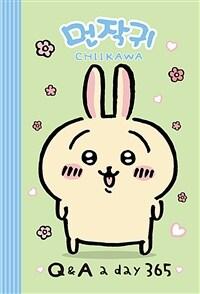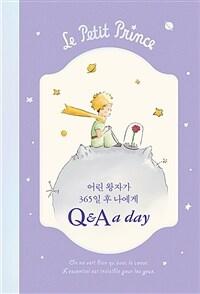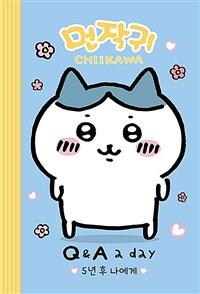책 이미지

책 정보
· 분류 : 국내도서 > 달력/기타 > 영어로 쓰인 한국서적 > 문학
· ISBN : 9788968495694
· 쪽수 : 278쪽
목차
Acknowledgements / 7
Introduction / 9
Chapter 1. Reading Technologies: Cathy Park Hong, Suji Kwock Kim, and Ethnic Nationalism / 37
Chapter 2. The Music of Post-Memory: Ed Bok Lee / 65
Chapter 3. Oppositional Intertextualities: The Adoptee Poetry of Sun Yung Shin and Jennifer Kwon Dobbs / 86
Chapter 4. Postrace Speculation: Cathy Park Hong's Engine Empire / 126
Chapter 5. “Errant Wildness” in the Wilderness: Sandra Lim / 145
Chapter 6. Division Systems: Sueyeun Juliette Lee's Underground National / 171
Chapter 7. Not Your Sidekick Chum: Cathy Park Hong's Poetry against Conceptual Whiteness / 193
Conclusion: The Second Decade / 221
Works Cited / 232
Appendix A: Collections by 20th-century Poets / 257
Appendix B: Collections by First-Decade 21st-Century Poets / 259
Appendix C: Collections by Second-Decade 21st-Century Poets / 261
Index / 263
저자소개
책속에서
Chapter 1
Reading Technologies:
Cathy Park Hong, Suji Kwock Kim, and Ethnic Nationalism
Building from a genealogy of Michel Foucault via Teresa de Lauretis, Shu-mei Shih has explained “technologies of recognition” as those “mechanisms in the discursive (un)conscious— with bearings on social and cultural (mis)understandings—that produce ‘the West’ as the agent of recognition and ‘the rest’ as the object of recognition, in representation.” As applied in the western academy, those technologies might “selectively and often arbitrarily confer world membership on literatures,” determining what of “the rest” is worthy of study (17). If the west has its technologies, other locations of “the rest” might likewise employ their own particular technologies. My specific interests here are South Korean academic technologies and how they recognize Asian American literature, particularly recent Korean American poetry, with a focus on Suji Kwock Kim and Cathy Park Hong.
When Hong published her third book in 2012, neither poet had been the focus of any peer-reviewed essays in the U.S., at least none that were listed in the MLA Bibliography. Hong had likewise been ignored in South Korea. Kim's work, on the other hand, has been well recognized by Korean “technologies.” By 2012, she had been the focus, sometimes along with Myung Mi Kim and/or Cathy Song, of at least six published, peer-reviewed essays in South Korea.
The difference in attention to the two writers may seem somewhat odd when comparing their publication records. Cathy Park Hong published her first book, Translating Mo'um in 2002, while Kim published her only book, Notes from the Divided Country, the next year. Both books won major prizes: a Pushcart Prize went to Hong's book, and the Walt Whitman Award went to Kim's. From 2002, Hong continued to publish poetry in journals and magazines, and she published two more books of poetry, Dance Dance Revolution, which won the Barnard Women Poets Prize, selected by Adrienne Rich, in 2006 and Engine Empire in 2012, both with W. W. Norton, a major American press. Kim has not published another poetry collection, and not even very many individual poems since 2003.
When Engine Empire was in the works and Hong had already published multiple poems that would appear in the volume, the Korean scholar Il-Hwan Lee noted, “Apart from Cathy Song and Myung-Mi Kim, [. . .] we have a truly promising younger Korean-American poet, Suji Kwock Kim” (413). Given the comparative publication records of Hong and Suji Kwock Kim noted above, this is a surprisingly exclusive comment. Indeed, the three poets noted by Lee almost complete the list of Korean American poets who had received published critical attention in Korea when he published his article, unless one were to consider Theresa Hak Kyung Cha's Dictee as experimental poetry. At that time, other than an essay of my own (revised as Chapter 3 below), one article on Ishle Yi Park (Kun Jong Lee), and one on Sun Yung Shin (Yoo) completed the list of English-language Korean American poets with South Korean critical attention. Like Suji Kwock Kim and Hong, neither of the other two writers had received published scholarly attention in the U.S., at least none listed in the MLA Bibliography.
The unusually generous attention to Suji Kwock Kim can be contextualized, like the Korean attention to other Korean American writers, by the globalism that is a clear and present reality in contemporary South Korea everyday life. Min-Jung Kim has offered a challenging reason for Korea's enthusiasm for global trends: “Because of their largely homogeneous ethnic ancestry, Koreans tend to fear difference and exclusion, and by extension, both the Korean state and the people would not want to lag behind in current world trends” (443). In other words, Korean homogeneity lies at the root of the desire to become a more global culture and economy; however, as the world comes to Korea, the pressures of cultural globalization then create challenges to homogeneity. Thus, homogeneity, with its desire for belonging, creates the conditions for its own dissolution.
A not-uncommon reaction to those conditions is a reassertion of ethnic nationalism, which sometimes surfaces in the debates and concerns about an increasingly multicultural Korea that has resulted from the global flows running through the country. Korean Americans like Kim and Hong might contribute to the increased multiculturalism that stems in part from recently liberalized immigration and citizenship laws, particularly for diasporic Koreans, and from a growing number of international marriages, particularly those between a Korean man and a woman from another Asian country. A strong trend in the scholarly analyses of Korean multiculturalism holds that it is an assimilationist multiculturalism. That is, the other-cultural migrant is expected to become as “Korean” as possible; thus, the challenges to Korean homogeneity in a globalized Korea are met not by accommodating differences but by attempting to discipline those differences through enforced homogeneity.
According to Tobias Hubinette, a Korean Swedish adoptee, “Korea's policy towards overseas Koreans [. . .] becomes a question of disciplining, policing and homogenising its diaspora.” In his survey of “hypernationalistic” legislation, he notes that “the Korean nation state has instated a new Korean citizenship based on a global jus sanguinis (the right of blood), and redemarcated its borders, thus turning all ethnic Koreans worldwide into potential Korean subjects” (“Imagining a Global Koreatown” 58). Overseas ethnic Koreans might, however, represent a challenge to the one-blood, one-culture disciplining of Korean nationalism.
It is not just conservative cultural workers who want to reassert Korean nationalism in the face of multicultural challenges. Even intellectuals like Nak-Chung Paik, who generally shows keen awareness of and sympathy for the diaspora, can often maintain a nationalist emphasis, although that emphasis may be more accommodating to difference than are more conservative emphases. In his thoughts on overcoming the “division system” that separates North from South Korea, Paik emphasizes the “community of Koreans that includes ethnic Koreans all over the world” (100), seeming to suggest that he sees diasporic individuals as Korean first and their other nationalities second. He sees globalization, through enhanced communication, “strengthening ethnic solidarity rather than the other way around” (101). A similar primary identification of overseas Koreans with the peninsula rather than the country from which they come seems to be a general (though not universal) characteristic of the Korean academic reception of Korean American writers.
Il-Hwan Lee echoes Paik's sentiment that international “ethnic solidarity” would be re-affirmed in healing systemic division, finding that Suji Kwock Kim “sees the surviving strength of the Korean people with respect and awe again and wishes that they, including her, would finally settle down in peace and prosper forever” (426, emphasis added). That solidarity in the face of an often traumatic history gives Kim a kind of hereditary han, a psychological state often identified as uniquely Korean. Han has been defined by Kwang-Sun David Suh as “the feeling of suffering of a person which has been repressed either by himself or through the oppression of others” (24). It is “a deep awareness of the contradictions in a situation and of the unjust treatment meted out to the people or a person by the powerful,” “the accumulation of such feelings and experiences.” Furthermore, it “is not just an individual feeling of repression” but “a collective feeling of the oppressed” (Suh 25). Identifying that feeling as collective indicates a traditional Korean societal emphasis that is often contrasted to western individualism. Younghee Lee likewise reflects a difference in eastern and western ways of thinking when she considers how to describe han for an English- speaking reader. She claims that it “is a difficult term to translate into English” because the “definition is continuously evolving and remains controversial,” but she argues that, “by grouping together such translation suggestions as ‘lamentation’, ‘hatred’, ‘resentment’, and ‘regret’, we can at least approximate the meaning of han in English” (2).
While Il-Hwan Lee does not specifically identify han in Suji Kwock Kim's poetry, his analysis suggests she shows han in her felt connection with the Korean historical collective, as the history of colonialism and war “aches in her soul, and this soul-aching is aggravated by her ancestors’ direct experiences of those Korean historical tragedies” (428). Kim's hereditary Korean identification through the trauma of her forbears is likewise argued in an earlier essay by Yangsoon Kim, who considers how “postmemory” functions in Kim's work (232-33, 241). Yet earlier scholarship was even more explicit in identifying Suji Kwock Kim through a nationalist discipline. Koo-Seul Kim claims that Suji Kwock Kim's “consciousness is basically rooted in the historical trauma of her divided country, Korea” (13). Geun Young Jang, the first Korean scholar to publish on Suji Kwock Kim's work, ascribes Korean, not American, “nationality” to her, along with Cathy Song and Myung Mi Kim (“Korean American Women Poets Speaking Together” 221), and subsequently argues that both Kims use “the cultural nationalist strategy” (“The Divided Self, Body, and Country” 190). Even though most of these scholars share a nationalistic stance (although there are also significant differences between them), none of them refers to the work of any of the others. The fact that they can share similar ideas without, apparently, being aware of what the others had written suggests that there is, indeed, a shared perspective that may be cultural as much as intellectual, that constitutes a set of “technologies of recognition.”
The latest consideration of Kim's work by Joon Ho Hwang is an important exception to much of the previous criticism. Hwang not only refers to the other scholars’ work, giving them the respect they deserve, but he also does not consider Kim as a Korean national. Indeed, his analysis specifically questions her portrayal of Korean suffering as an American appropriation of the Korean body. He does, however, share a nationalist approach with the other scholars, focusing on Kim's Korean-War poems exclusively. That nationalism is suggested when he asks how we are to understand Korean war poetry written by an American who has not personally suffered from the war (“그렇다면 전쟁을 겪지 못한 미국 태생의 한국계 미국인 시인이 쓴 한국 전쟁 시를 어떻게 바라보아야 할까” [152]). Hwang's conclusions differ from previous critics, but he also uses a Korean technology of recognition. His application of that technology does not recognize Kim as Korean, however.
As the brief quotations above suggest, the scholarship on Suji Kwock Kim, at least until Hwang's contrarian per- spective, either when it considers her individually or comparatively with Song and/or Myung Mi Kim, stresses her Korean rather than American nationality. America becomes the place of rupture; Korea, in spite of its current division, becomes the place of potentially unified identity, of racial nostalgia. Perhaps ironically, although not intentionally so, this nationalist emphasis replicates the western attitude Shih identifies when she considers Fredric Jameson's “megastatement about non- Western literatures” as all “national allegories,” a “megastatement” Shih sees as symptomatic of the western academy (20). She notes, “When the signified is predetermined, allegories are easier [. . .] to understand and consume” (21). The predetermined signified will “confirm the stereotyped knowledge of the audience” (21). Notes from the Divided Country gives easy access to a predetermined signified of national allegory, except, in the Korean case, the national allegory is familiar and reifies sameness rather than difference.
Indeed, Kim shows enthusiastic admiration for the Miracle on the Han, to use a phrase that reflects South Korea's astonishing economic development from a third-world wasteland following the end of fighting in the Korean War to one of the world's largest economies. Kim expresses awe at the achievement of that Miracle and offers homage to her Korean forbears for their resilience in “Montage with Neon, Bok Choi, Gasoline, Lovers & Strangers.” In Seoul, Kim gets “drunk on seeing what was made // almost from nothing,” on seeing that modern city “built / out of ash, out of the skull-rubble of war” (35). In “The Korean Community Garden in Queens,” the last poem in her book, she sees the spirit of that Miracle take root in the new world as Korean immigrants take “the vacant lot nobody else wanted to rebuild” and turn it into a fertile garden in which “old country” plants “survive / like their gardeners” by achieving fruitful life from the midst of waste as they “Wring crumbs of rot / for water” (71).






















![[큰글자도서] 조화로운 삶 - 헬렌과 스콧 니어링이 버몬트 숲속에서 산 스무 해의 기록](/img_thumb/9791163143406.jpg)
![[큰글자책] 의사의 반란 - 건강하려면 병원과 약을 버려라](/img_thumb/9788967442231.jpg)
![[큰글씨도서] 로또9단 1등 분석기법 - 과학적 분석으로 로또 1등에 도전한다!](/img_thumb/9791188287215.jpg)
![[큰글씨 확대판] 해커스 중국어 HSK 6급 단어장 - 주제별 연상암기로 HSK 6급 2500단어 30일 완성 ㅣ 최신출제 포인트 반영 + 미니 실전 모의고사 2회분 제공, HSK 고난도 어휘, 보카 수록](/img_thumb/9791137905481.jpg)




![[옐로우] 초등 세계지도 노트 (스프링 120g 내지)](/img_thumb/8809959821696.jpg)
